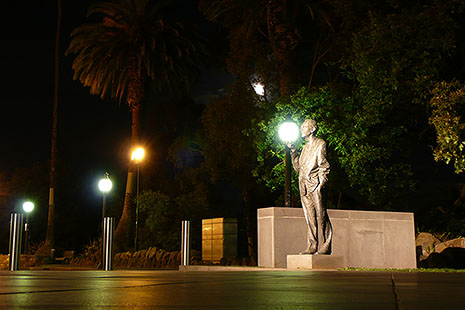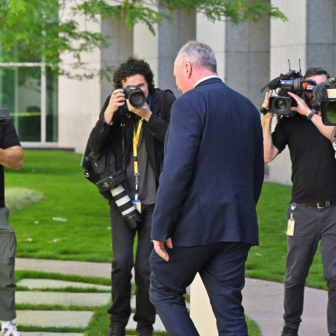The prolific psephologist Peter Brent recently asked why, in electoral terms, Victoria is different from the other states. He cited Labor’s dominance of the state’s two-party-preferred vote in every federal election since 1990 – even in the comprehensive defeat of 2013 – and was puzzled that premier Denis Napthine had failed to regain ground in the opinion polls. Flippantly, he identified former Liberal premier Jeff Kennett and the current prime minister, Tony Abbott, as the likely culprits. More likely, though, it was “just something about Victorian voters.”
Brent could have gone further in documenting the Labor dominance of Victoria since the early 1980s. Labor has governed Victoria for two-thirds of that period, a stunning record for a party that sat on the opposition benches continuously from 1955 to 1982. Combined with the federal voting pattern, this suggests something more than transient hostility to particular individuals or even the influence of great policy battles. It points to a matter of political culture.
While the media tend to depict every election as an open contest with millions liable to change their minds over this policy or that personality, the reality is otherwise. Even in an era of more fluid political allegiances, the bulk of citizens vote the same way all their lives. It’s true that some progressives may move from Labor to the Greens and some conservatives may flirt with minority parties, but that matters less in a preferential-voting system than it would under first-past-the-post. Essentially, most people who vote progressive will always do so, and the same is true of conservatives.
Political parties might build campaigns around the quest for the uncommitted voter, but the best way to win an election is to possess a critical supply of the kind of voter who is likely to support the party in good times or bad. If you have enough of them, the need to attract the uncommitted is minimised. Fortunately for Labor in Victoria, it has more of this kind of voter than it seems to have in other states. The question is, why?
For a start, there’s the makeup of the state’s workforce. Despite its overall decline, the manufacturing industry retains an important presence in Victoria, which helps deliver unionised blue-collar workers into the Labor column.
Then there’s the fact that the electorally potent theme of multiculturalism – potent elsewhere, that is – largely attracts bipartisan support in Victoria. In fact, the concept was taken for granted by many on both sides of politics even before the term was coined. Jeff Kennett’s commendable hostility to Pauline Hanson in the mid 1990s amply demonstrated the minimal electoral return on the “race card” in the state; and while there is no reason to believe that Kennett was other than genuine, he possibly had little choice politically. This stands in stark contrast to the situation in some other states, where subliminal racism and “dog-whistling” constitute staples on the conservative menu. It is virtually impossible to “wedge” Labor on race in Victoria.
A third contributing factor is education. Various American studies have linked levels of education with political party support. Overwhelmingly, states with the highest educational levels vote Democratic in presidential elections (think Massachusetts and California) while those with the lowest (think Alabama and Mississippi) are Republican bastions. With only six states, Australia can’t produce as watertight a correlation, but Victoria’s lead on a number of indicators (the proportion of the population with a bachelor’s degree or above, for example) suggests a comparable phenomenon. It is hard not to suspect that this also helps with the embrace of multiculturalism and aversion to extremism.
Labor also benefits from what doesn’t exist in Victoria: a substantial mining industry. While miners were once an important part of the party’s core vote, those days are long gone. The large mining states, Western Australia and Queensland, have delivered appalling results for federal Labor over many decades: since 1949, Labor has secured a majority of the two-party-preferred vote just four times in Western Australia and thrice in Queensland. Mining is the main export industry in each of those states, and its advocates are adept at portraying their own interests as identical to those of the state as a whole – to the obvious detriment of a federal Labor government exploring its taxation options or mindful of its environmental obligations. As “evil, centralist socialists,” Labor is thus vulnerable to perennial bouts of Canberra-bashing. Victoria’s main export is (wait for it) education.
Victoria also lacks a strident conservative talkback radio culture, although one suspects that the likes of Alan Jones are mostly preaching to the converted anyway, and the ageing converted at that. Rabid right-wing radio programs, imported and local, have invariably failed in Melbourne, suggesting the absence of a critical mass for that kind of extremism and minimising its potential to shape debate even around the edges.
The importance of political culture was amply demonstrated in the 2010 federal election. According to the press gallery consensus, Labor’s campaign – with a flawed leader and numerous tactical errors – was one of the worst on record. But someone forgot to tell the voters of Victoria, South Australia and Tasmania, which each proceeded to deliver a majority of the two-party preferred vote and a majority of seats to Labor. Indeed, the Victorian vote was Labor’s highest ever.
This doesn’t mean that Julia Gillard was a genius or that the campaign was perfect. It does suggest that Victoria is a culturally progressive state where Labor starts any campaign with the advantage of a larger, essentially locked-in vote and with a lot less to worry about from (among others) angry miners and racists. All other things being equal, a Western Australian voter is more likely to see a mining tax as poor economic management than is a Victorian. Put another way, the conservatives have to work much harder in Victoria than they do in Queensland and Western Australia.
This leads us to the current Victorian government and Brent’s puzzlement that although the premier has begun pushing the usual buttons the polls have failed to turn around. One obvious answer lies in the points made above: Labor’s core strength in a culturally progressive state. Equally important is the fact that the current government was essentially an “accidental” one, elected largely on voter disenchantment with public transport in several key electorates. The Coalition’s frail lower house majority has rendered decisiveness almost impossible and it remains unclear whether public transport has improved sufficiently to keep onside those who switched last time. By contrast, “accidental” (minority government) Labor premier Steve Bracks was in much better shape seeking re-election in 2002.
This is not to say that Napthine is doomed: incumbency has its advantages and state Labor is not without its problems. But one-term governments are less unusual at state level than they are federally. Unlike any other state election on the horizon, this one is a contest. •




